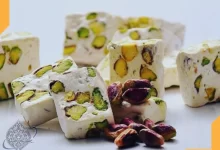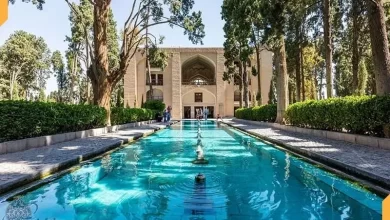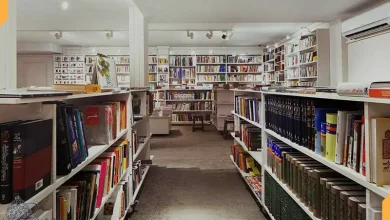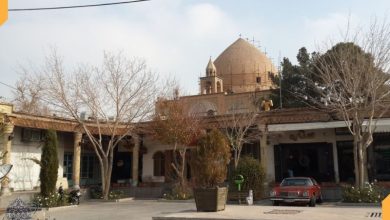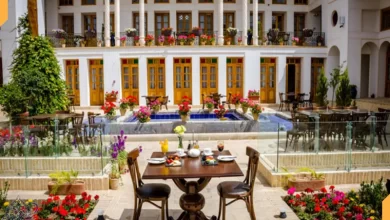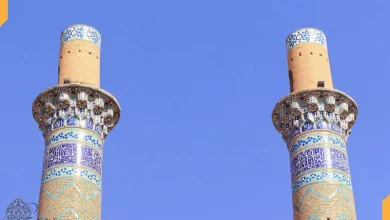Ghalamzani (Engraving on Metal)

Ghalamzani (Engraving on Metal) is one of the handicrafts of Isfahan, Shiraz, and Tabriz and each of them has its own style.
The vast land of Iran is the creative source of pure, genuine, and spiritual arts and at the same time, it’s relevant to people’s lives and also the customs of its communities and tribes.
According to existing historical documents, Ghalamzani appertains to more than a hundred years before Christ. Let’s get familiar with this magnificent art!
What’s the meaning of Ghalamzani (Engraving on Metal)?
Ghalamzani is one of the old handicrafts of Iran that is classified in the metal-working group.
(Engraving on Metal is in fact, the art of decorating and engraving different patterns on metal objects, especially copper, gold, silver, and brass which is being done by stylus and hammer blow.
Tools used in Ghalamzani:
- Different kinds of stylus that its number reach 140 or more
- Compass in different sizes
- Hammer
- Meter
- Scissor
- Bitumen melting device
How Ghalamzani is done?
Today, for doing Ghalamzani (Engraving on Metal), inside or beneath of the intended dish or tray that is usually made of copper or silver is filled with the compound of bitumen and plaster to reduce the noise of the stylus and also prevent the dish from being pierced while working.
Then, the intended patterns are drawn on the dish, the proper stylus is selected, put on the surface of the dish, knocking at the end of the stylus with a hammer to make patterns and corrugations on the dish with the change of the stroke’s intensity.
After making the pattern, the bitumen is separated, coal dust is poured on the corrugations and the dish is being covered with black polish oil.
Therefore, the engraved patterns are observed in the form of black and clear lines.
The authenticity of Ghalam Zani in Iran
The antiquity of Ghalam Zani is attributed to Saka or Sit period that had the Aryan race.
The antiquity of the gold cup of Hassanlou that was discovered in 1336 and has prominent patterns like gods riding a chariot returns to the first millennium.
Golden cups of Marlik are considered the Artworks of this period.
There are limited works of Ghalam zani remaining from the Medes period that came to work in Iran in the 7th century B.C.
With the formation of the Achaemenid government, the art of Ghalamzani (Engraving on Metal) got transformed and also affected the period after it.
This period is in fact, the culmination of metal-working art, but due to the Eskandar (Alexander the Great) attack and burning of Takht-e Jamshid, many works were destroyed and according to his command, also were melted and turned to coin.
In the Sassanid period, which means the years of 224 to 650 A.D, the art of Iran was affected by the art of Greece and Rome due to the business expansion between Iran, Greece, and Rome.
The most common dish of this period was a tray that Sassanid engraved the pictures of hunting and king’s ceremonies, like the ritual of gift giving.
The art of Ghalamzani in the period after Islam
In the early centuries of Islam, Arabs imitated the art of Ghalamzani in the Sassanid period, and in the next centuries, due to the interest of Iranian artists in religion and their tendency to Islam, the patterns of local designs and Iranian myths gave their place to Kufi scripts, verses, and Ahadis.
In the Seljuk period, the art of Engraving on Metal like other artistic courses got supported and also developed.
In this period, incrustation of metals got common in the form of gold, copper, and silver wires or incrustation of pewter with copper wire.
Fretwork on the metal is one of the prettiest works of this period. Seljuk dishes had mainly two characteristics:
one was calligraphy lines and the other is using Kufi script in Ghalamzani (Engraving on Metal).
Silver- working on metals reached the climax of prosperity and perfection in the Safavid period; in this period, kinds of Persian engraving and bowls were common.
Read more about handicraft: Isfahan Handicrafts
Different styles of Ghalamzani (Engraving on Metal)
- Embossed Work (Barjeste Kari)
- Semi-embossed work (Nime Barjeste Kari)
- Rize Ghalamzani
- Carving
- Fretwork
Ghalamzani in different provinces of Iran:
Shiraz: Shiraz was the center of Ghalamzani (Engraving on Metal) on silver in the past, but decreasing the number of craftsmen along with the high price of silver caused its prosperity to get decreased.
In Ghalamzani workshops, usually, craftsmen implement the design on the product subjectively and without using a pattern, and then, they engrave it with a hammer and iron stylus.
Usually, the craftsmen build stylus themselves.
Isfahan:
Persian Metal Engraving in Isfahan like other common handicrafts in this city has a historical background and impressive prosperity.
The number of employees in this course is also more in comparison with other cities and naturally, the consumption rate is more.
Tabriz:
Although the industry of Engraving on Metal in Tabriz has a long history, today, it doesn’t have the prosperity of the past.
The main reason is the deficiency of craftsmen, increased salaries, and also the high price of silver.
Ghalamzani Engraving on Metal of silver products is done in two-phase and in two separate workshops: the building workshop and the Ghalam Zani workshop.
Samples of Ghalamzani in other countries
There is a sample of Iranian Ghalamzani art Engraving on Metal at the entrance of the World Intellectual Property Organization (WIPO) in Switzerland that it’s a copper goblet.
FAQ
Which tools are being used in Ghalamzani?
Stylus, compass, etc.
Can you name some styles of Ghalamzani (Engraving on Metal)?
Carving, fretwork, etc.
Which cities of Iran have workshops on Ghalamzani?
Isfahan, Shiraz and Tabriz.
Conclusion
Iran is full of magnificent handicrafts; each city has its own handicrafts.
In recent years, the efforts of its artists of Cultural Heritage and Tourism Organization have been to renew the Ghalamzani art and vitalize the valuable tradition of the past along with innovations that it had.
Fortunately, this art has been revived and a new step was taken in the path of development of this art.
Have you ever tried to do it? Do you like Iranian handicrafts?
Have you ever bought a Ghalamzani dish as a souvenir? Have you ever visited Persian Metal Engraving workshops? Please share your comments with us…
